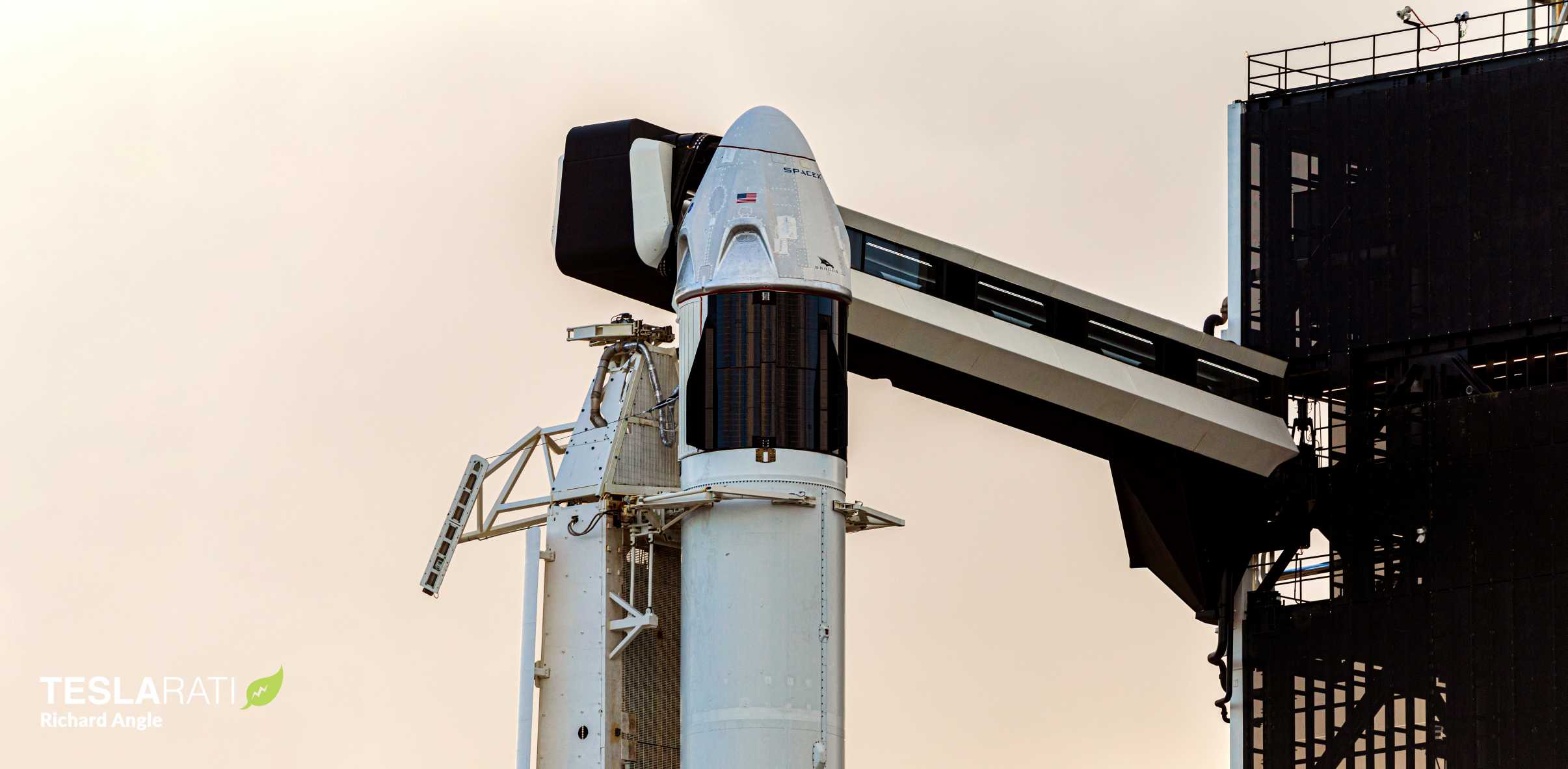
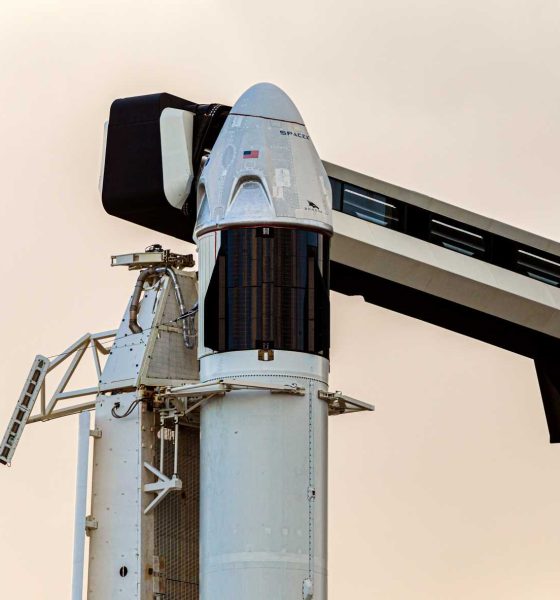
News
SpaceX’s NASA astronaut launch debut jumps its place in line, now up next
According to NASASpaceflight.com reporter Michael Baylor, SpaceX’s Starlink-7 satellite launch has been indefinitely delayed due to drone ship constraints, meaning that the company’s Crew Dragon astronaut launch is now up next.
As a result, SpaceX’s next orbital launch has been delayed by at least eight days. In return, however, that launch will arguably be the most important in the company’s 18-year history, (hopefully) marking the biggest step by far SpaceX has taken towards its main goals of democratizing spaceflight and enabling the sustainable, permanent settlement of Mars. Known as Demonstration Mission 2 (Demo-2), it will simultaneously be the first crewed launch under NASA’s Commercial Crew Program (CCP) and SpaceX’s first astronaut launch ever and is scheduled to lift off no earlier than (NET) 4:33 pm EDT (20:33 UTC), May 27th.
Formerly scheduled to launch no earlier than (NET) May 7th, 17th, 18th, and 19th after a number of technical and weather-related delays, SpaceX’s 8th 60-satellite Starlink launch has now been delayed until sometime after Crew Dragon’s late-May inaugural astronaut launch. According to NASASpaceflight and speculated about in-depth on unofficial forums in the days prior, the schedule swap decision was made due to constraints in SpaceX’s drone ship. While simple on the face of things, the change does reveal a bit of the hidden strategy behind SpaceX’s management of both its rocket fleet and the ships that recover them.
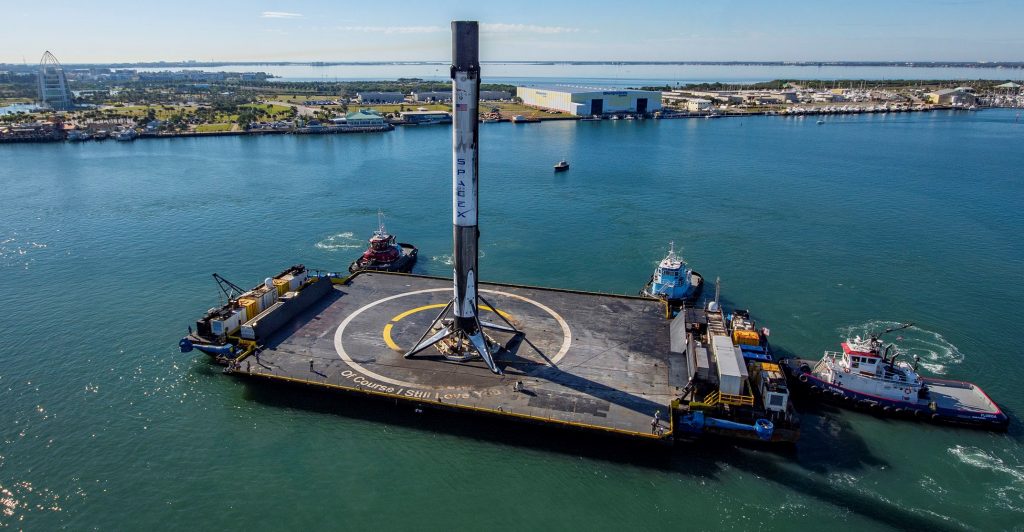
Compounded by multiple largely unrelated delays, including weather in the planned booster and fairing landing zones, the Starlink-7/Demo-2 launch swap was caused by the simple fact that SpaceX only has one operational drone ship on the East Coast. The company coincidentally began sea trials with a second drone ship the very same day that Of Course I Still Love You (OCISLY) headed out to sea to catch Starlink-7’s Falcon 9 booster. However, that second ship has been extensively upgraded and will likely take several weeks of sea trials before it can be declared ready for its first East Coast rocket recovery attempt.
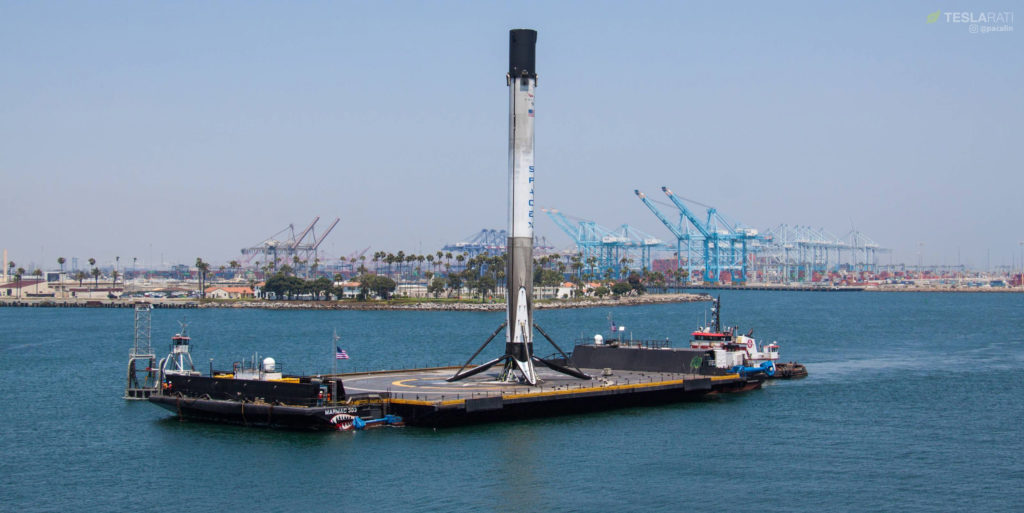
For each drone ship booster landing, it takes at least a week for the ship to be towed several hundred miles downrange to the recovery zone and at least as long to return to port. Add in the time required to safe and secure a landed Falcon 9 or Heavy booster, navigate sea states to prevent damage to – or the outright loss of – that booster, and the work needed to safely lift it off the drone ship’s deck onto dry land and it can easily be 9-10 days before a drone ship is ready for another landing.
At the same time, SpaceX’s turnaround record is about eight days between booster landings. Had SpaceX persevered and attempted to launch Starlink-7 on May 19th and Crew Dragon’s inaugural astronaut launch on May 27th, it’s possible that things would have worked out, with both booster landings occurring on schedule on the same drone ship. However, given just how much of a priority Crew Dragon Demo-2 is compared to an internal Starlink launch and a tropical storm threatening to delay Starlink-7’s launch and landing even further, SpaceX clearly decided that it just wasn’t worth the risk.
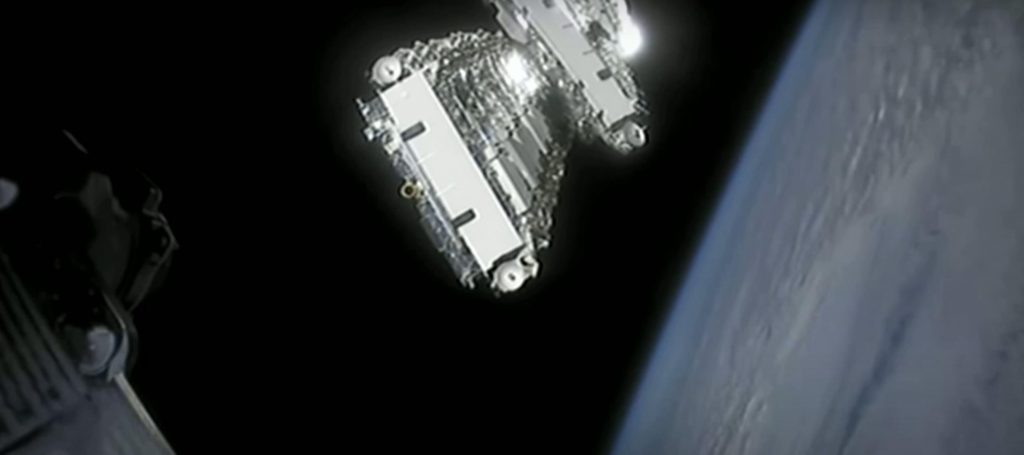
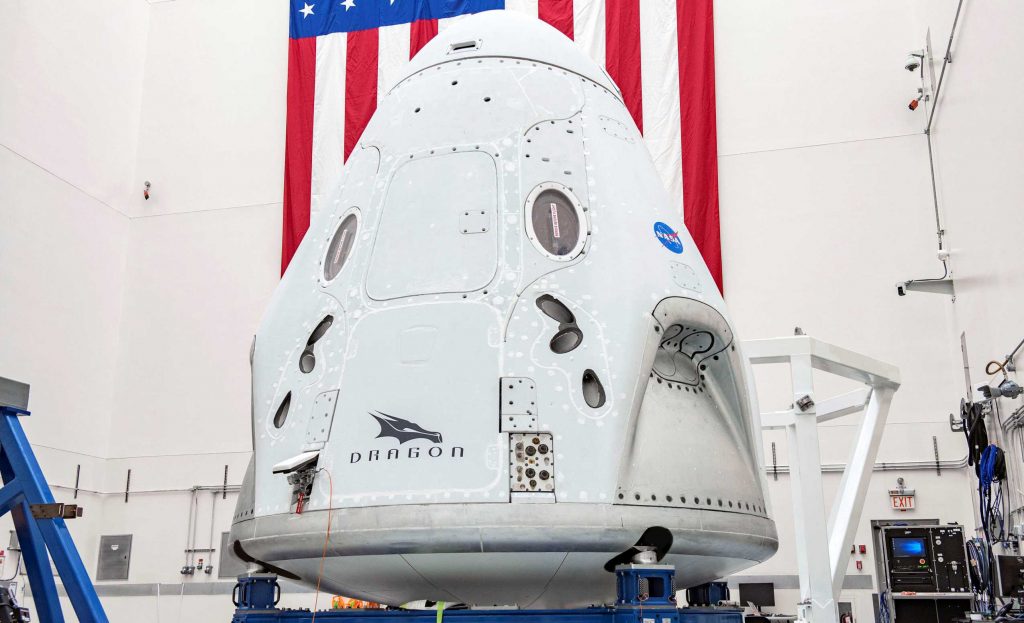
Given the extraordinary importance of Demo-2, set to be the first time the United States has launched its own astronauts into orbit in almost nine years, it’s not exactly surprising that SpaceX has chosen conservatism this time around and prioritized its inaugural NASA astronaut launch. According to Spaceflight Now, the Crew Dragon capsule assigned to SpaceX’s inaugural NASA astronaut launch – pictured above – actually joined the new Falcon 9 rocket that will launch it at Pad 39A on May 15th. Now fully fueled with liquid hydrazine and nitrogen tetroxide, the spacecraft could be mated with Falcon 9’s upper stage at any moment (if it hasn’t been already).
Once fully assembled, Falcon 9 booster B1058, a new Falcon 9 upper stage, Crew Dragon capsule C206, and an expendable trunk section will be rolled horizontally out to Kennedy Space Center (KSC) Pad 39A to perform a crucial pre-launch static fire test. Rollout and static fire operations could begin at any point within the next few days. It remains to be seen whether drone ship OCISLY will remain in the Atlantic Ocean or head back to Port Canaveral before departing again to catch booster B1058.

Elon Musk
Elon Musk confirms xAI’s purchase of five 380 MW natural gas turbines
The deal, which was confirmed by Musk on X, highlights xAI’s effort to aggressively scale its operations.

xAI, Elon Musk’s artificial intelligence startup, has purchased five additional 380 MW natural gas turbines from South Korea’s Doosan Enerbility to power its growing supercomputer clusters.
The deal, which was confirmed by Musk on X, highlights xAI’s effort to aggressively scale its operations.
xAI’s turbine deal details
News of xAI’s new turbines was shared on social media platform X, with user @SemiAnalysis_ stating that the turbines were produced by South Korea’s Doosan Enerbility. As noted in an Asian Business Daily report, Doosan Enerbility announced last October that it signed a contract to supply two 380 MW gas turbines for a major U.S. tech company. Doosan later noted in December that it secured an order for three more 380 MW gas turbines.
As per the X user, the gas turbines would power an additional 600,000+ GB200 NVL72 equivalent size cluster. This should make xAI’s facilities among the largest in the world. In a reply, Elon Musk confirmed that xAI did purchase the turbines. “True,” Musk wrote in a post on X.
xAI’s ambitions
Recent reports have indicated that xAI closed an upsized $20 billion Series E funding round, exceeding the initial $15 billion target to fuel rapid infrastructure scaling and AI product development. The funding, as per the AI startup, “will accelerate our world-leading infrastructure buildout, enable the rapid development and deployment of transformative AI products.”
The company also teased the rollout of its upcoming frontier AI model. “Looking ahead, Grok 5 is currently in training, and we are focused on launching innovative new consumer and enterprise products that harness the power of Grok, Colossus, and 𝕏 to transform how we live, work, and play,” xAI wrote in a post on its website.
Elon Musk
Elon Musk’s xAI closes upsized $20B Series E funding round
xAI announced the investment round in a post on its official website.

xAI has closed an upsized $20 billion Series E funding round, exceeding the initial $15 billion target to fuel rapid infrastructure scaling and AI product development.
xAI announced the investment round in a post on its official website.
A $20 billion Series E round
As noted by the artificial intelligence startup in its post, the Series E funding round attracted a diverse group of investors, including Valor Equity Partners, Stepstone Group, Fidelity Management & Research Company, Qatar Investment Authority, MGX, and Baron Capital Group, among others.
Strategic partners NVIDIA and Cisco Investments also continued support for building the world’s largest GPU clusters.
As xAI stated, “This financing will accelerate our world-leading infrastructure buildout, enable the rapid development and deployment of transformative AI products reaching billions of users, and fuel groundbreaking research advancing xAI’s core mission: Understanding the Universe.”
xAI’s core mission
Th Series E funding builds on xAI’s previous rounds, powering Grok advancements and massive compute expansions like the Memphis supercluster. The upsized demand reflects growing recognition of xAI’s potential in frontier AI.
xAI also highlighted several of its breakthroughs in 2025, from the buildout of Colossus I and II, which ended with over 1 million H100 GPU equivalents, and the rollout of the Grok 4 Series, Grok Voice, and Grok Imagine, among others. The company also confirmed that work is already underway to train the flagship large language model’s next iteration, Grok 5.
“Looking ahead, Grok 5 is currently in training, and we are focused on launching innovative new consumer and enterprise products that harness the power of Grok, Colossus, and 𝕏 to transform how we live, work, and play,” xAI wrote.
Investor's Corner
Tesla gets price target bump, citing growing lead in self-driving

Tesla (NASDAQ: TSLA) stock received a price target update from Pierre Ferragu of Wall Street firm New Street Research, citing the company’s growing lead in self-driving and autonomy.
On Tuesday, Ferragu bumped his price target from $520 to $600, stating that the consensus from the Consumer Electronics Show in Las Vegas was that Tesla’s lead in autonomy has been sustained, is growing, and sits at a multiple-year lead over its competitors.
CES 2026 validates Tesla’s FSD strategy, but there’s a big lag for rivals: analyst
“The signal from Vegas is loud and clear,” the analyst writes. “The industry isn’t catching up to Tesla; it is actively validating Tesla’s strategy…just with a 12-year lag.”
The note shows that the company’s prowess in vehicle autonomy is being solidified by lagging competitors that claim to have the best method. The only problem is that Tesla’s Vision-based approach, which it adopted back in 2022 with the Model 3 and Model Y initially, has been proven to be more effective than competitors’ approach, which utilizes other technology, such as LiDAR and sensors.
Currently, Tesla shares are sitting at around $433, as the company’s stock price closed at $432.96 on Tuesday afternoon.
Ferragu’s consensus on Tesla shares echoes that of other Wall Street analysts who are bullish on the company’s stock and position within the AI, autonomy, and robotics sector.
Dan Ives of Wedbush wrote in a note in mid-December that he anticipates Tesla having a massive 2026, and could reach a $3 trillion valuation this year, especially with the “AI chapter” taking hold of the narrative at the company.
Ives also said that the big step in the right direction for Tesla will be initiating production of the Cybercab, as well as expanding on the Robotaxi program through the next 12 months:
“…as full-scale volume production begins with the autonomous and robotics roadmap…The company has started to test the all-important Cybercab in Austin over the past few weeks, which is an incremental step towards launching in 2026 with important volume production of Cybercabs starting in April/May, which remains the golden goose in unlocking TSLA’s AI valuation.”
Tesla analyst breaks down delivery report: ‘A step in the right direction’
Tesla has transitioned from an automaker to a full-fledged AI company, and its Robotaxi and Cybercab programs, fueled by the Full Self-Driving suite, are leading the charge moving forward. In 2026, there are major goals the company has outlined. The first is removing Safety Drivers from vehicles in Austin, Texas, one of the areas where it operates a ride-hailing service within the U.S.
Ultimately, Tesla will aim to launch a Level 5 autonomy suite to the public in the coming years.








